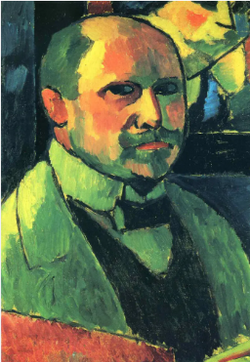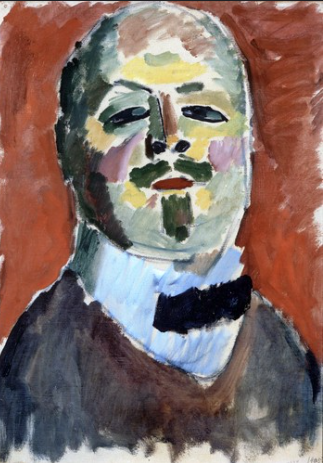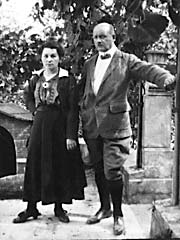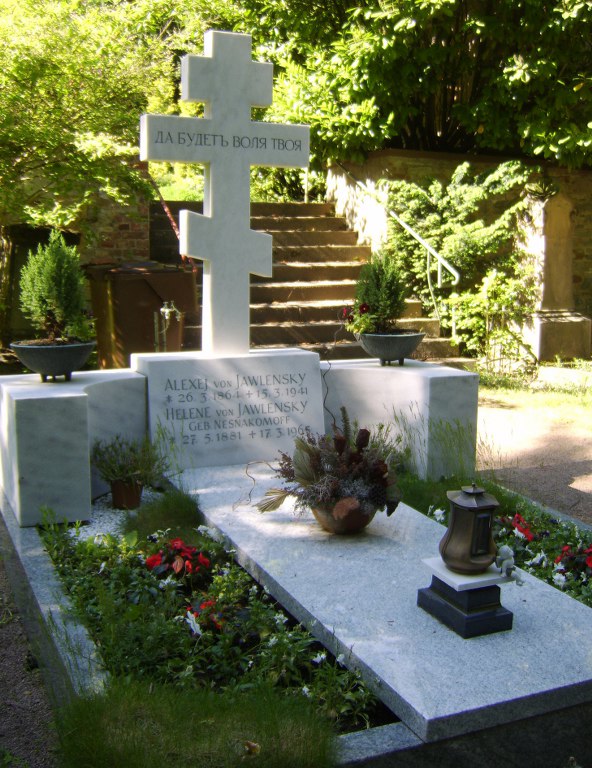Travels in Europe and especially through France introduced Jawlensky to modern art developments. He worked for awhile in Henri Matisse's studio. After his return to Munich he met Paul Klee and Franz Marc and joined them and Kandinsky in the most avant-garde artist group in southern Germany, the Neue Künstler Vereinigung München (New Artist Association Munich).
Jawlensky as a Russian had to leave Germany and settled in Switzerland during WWI. In 1921 Jawlensky returned to Wiesbaden, Germany and married Helen Nesnakomoff in 1922. In 1929 he began to suffer from arthritis and was forced to paint with both hands as he could no longer hold a brush; he was unable to paint at all after 1937. His art was declared "degenerate" by the Nazis in 1937 and 72 of his works were confiscated from collections in German museums.
Today he is primarily famous for the large number of portraits, which by 1916 were reduced to heads and which after 1918 became abstractions of faces.
Travels in Europe and especially through France introduced Jawlensky to modern art developments. He worked for awhile in Henri Matisse's studio. After his return to Munich he met Paul Klee and Franz Marc and joined them and Kandinsky in the most avant-garde artist group in southern Germany, the Neue Künstler Vereinigung München (New Artist Association Munich).
Jawlensky as a Russian had to leave Germany and settled in Switzerland during WWI. In 1921 Jawlensky returned to Wiesbaden, Germany and married Helen Nesnakomoff in 1922. In 1929 he began to suffer from arthritis and was forced to paint with both hands as he could no longer hold a brush; he was unable to paint at all after 1937. His art was declared "degenerate" by the Nazis in 1937 and 72 of his works were confiscated from collections in German museums.
Today he is primarily famous for the large number of portraits, which by 1916 were reduced to heads and which after 1918 became abstractions of faces.
Family Members
Sponsored by Ancestry
Advertisement
Explore more
Sponsored by Ancestry
Advertisement










